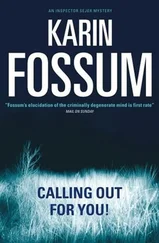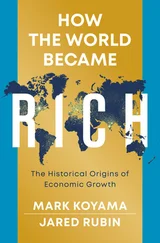Any regular Western visitor to the developing world will be familiar with that awkward moment when a local resident raises, with a passion and level of forensic detail that reveals this is still an open wound, some injustice perpetrated long ago by the colonial master. Baffled, the traveller registers that the forgotten massacre or broken treaty, which he has only just discovered, is the keystone on which an entire communityâs identity has been built. âGosh, why are they still harping on about that?â he thinks. âWhy canât they just move on? We have.â It is a version of the âWhy do they hate us so?â question a shocked America asked in the wake of September 11. Eritreaâs story provides part of the answer to that query. It is very easy to be generous with your forgiving and forgetting, when you are the one in need of forgiveness. A sense of wounded righteousness keeps the memory sharp. Societies that know they have suffered a great wrong have a disconcerting habit of nursing their grievances, keeping them keen through the decades.
Itâs hard to think of another African country that was interfered with by foreign powers quite so thoroughly, and so disastrously, as Eritrea. âMy country has a lot of history,â an Eritrean academic once told me. âIn fact,â he added, with lugubrious humour, âthatâs all it has.â And like Palestine and Rwanda, East Timor or Northern Ireland, Eritreaâs fate has illustrated the truth that, when it comes to destabilizing regions and disturbing the sleep of nations, size doesnât matter. When the UN laid the groundwork for a guerrilla war by ushering in a flawed constitution in the 1950s, Eritreaâs population was slightly more than 1 million. When Ethiopiaâs mighty army lost to what its leadership had dismissed as âa handful of banditsâ in 1991, Eritreaâs residents numbered less than the population of Greater Manchester today. A province no larger than a medium-sized American state, most of it uninhabited, raised a clamour so loud that in the end it could no longer be ignored. Eritreaâs history resembles one of those expensive television advertisements in which the flicking of a tiny cog leads to the toppling of a spanner, which sends windscreen wipers gyrating, a tyre rolling â a long chain of cause and effect which eventually climaxes in the revving of a sleek family car. Grudges which are not addressed acquire a momentum all their own, shuddering across continents and centuries until they erupt in a thunderous roar. âSmallâ conflicts, left to fester long enough, have an uncanny way of bringing down empires.
Written as Eritrea faces one of the toughest challenges in its history, this is a book about betrayal, repeated across the generations, and how the expectation of betrayal can both create an extraordinary inner strength and distort a national psyche, sending a community down strange and lonely paths.
Despite the glazed-eye reactions I encountered, Eritreaâs history is not an abstruse irrelevance. The peculiar mulishness of its citizens did not spring spontaneously into existence. Eritreaâs seeming idiosyncrasies have entirely logical roots, roots that â to the Western reader â reach surprisingly close to home. They cannot be unpicked from the vainglorious dreams of a 19th-century Italian man of letters, an English suffragetteâs clash with snooty British officialdom and the pantomime antics of several generations of GIs. In a new era of superpower intervention abroad, in which the War on Terror has replaced the fight against Communism as justification for Western military adventurism, the old cliché about the dangers of forgetting historyâs mistakes holds truer than ever. Part and parcel of our own story, Eritrea should serve as a lasting cautionary tale, encouraging us to pause and ponder before rushing in. We forget the roles we play in such far-off outposts at our peril.
CHAPTER 1 The City Above the Clouds
âThat thin air had a dream-like texture, matching the porcelain-blue of the sky, with every breath and every glance he took in a deep anaesthetising tranquillity.â
Lost Horizon, James Hilton
Whenever I land in Asmara, a novel read in adolescence comes to mind. It tells the story of a small plane whose pilot turns hijacker. Crash-landing in a remote part of the Himalayas, he dies of his injuries before he can explain his bizarre actions to the dazed passengers. They emerge from the wreckage to be greeted by a wizened old monk, who leads them to a citadel hidden above the peaks, a secret city whose existence has never been recorded on any map. They are welcomed to Shangri-La, where, breathing the chill air that wafts from the glaciers and surveying the world from a tremendous height, they begin reassessing their lives with the same calm detachment and cosmic clarity as the monks. But as time goes by, they learn they must make a terrible choice. They can stay in Shangri-La and live forever, for their hosts have discovered something approaching the secret of eternal youth. Or they can plunge back into the hurly-burly of the life they knew and eventually die as ordinary mortals, grubbing around down on the plains.
Flying in from Cairo, where even during an early-morning stopover the air blasts radiator-hot through the open aircraft door, one always has the sense of landing in a capital located where, by rights, it has no place to be.
Even in the satellite photos Eritrea, a knobbly elongated triangle lying atop Ethiopia, its giant neighbour to the south, seems an inhospitable destination, a landscape still too raw for human habitation. The route the planes follow takes you over mile upon relentless mile of dun-coloured desolation, made beautiful only by the turquoise fringe where sand meets sea; a beauty that you know would evaporate if ever you ventured down to sea level to brave the suffocating heat. A spray of islands, the Dahlak, shows only the faintest dusting of green. The rolling coastal sands, which show up from outer space as a strip of pearly-pink, run from the port of Massawa north-west to the border of Sudan. To the south-east, where a long, thin finger of land points towards Djibouti, the rock turns a forbidding black. Volcanic lava flows have created a landscape grimmer than the surface of the moon. This is the infamous Danakil Depression, said to be the hottest place on earth, where summer temperatures touch heights feared by even the whippet-thin Afar tribesmen. Behind this flat coastal strip, the land billows up to form a magnificent escarpment, the ripples of hills deepening into jagged waves of dark rock, a giant crumple of mountain creased by empty ravines and bone-dry river beds. It is only in the triangleâs western corner, where Eritrean territory juts and bulges into northern Ethiopia, that rivers â the Gash and the Barka â flow all year round. Here in the western lowlands, the gradient finally levels off, wrinkles smooth away and the arid sands cede to the deep green that spells rain, the shade of trees, the blessing of crops.
But it is not the bleakness, but the altitude that makes Asmaraâs location as improbable as that of Shangri-La. The Italians who colonized Eritrea at the tail end of the 19th century fled the stifling heat of the Red Sea by heading into the ether, up towards the kebessa , or central highlands. Coming in to land on the wide Hamasien plateau, there is none of the familiar routine of diving through a carpet of white fug to emerge in another, greyer reality. Defying the laws of gravity, planes bound for Asmara certainly go up, but to passengers aboard they barely seem to bother coming down. You hardly have time to register the neat concentric rings â like wormâs trails â left by farmersâ terracing, the rust-coloured plain, the long white scratches of roads, before the wheels hit the ground. At 7,600 ft â a mile and a half high â the capital lies at the same heady altitude as many of Europeâs lower ski stations. The crisp mountain air is so thin, landing pilots must slam on their brakes and then keep them, shrieking, in place, to prevent their aircraft overshooting the runway. Take-offs seem to go on forever, as the accelerating plane lumbers down the tarmac in search of air resistance, finally achieving just enough friction for the rules of aerodynamics to kick in before it careers into the long grass.
Читать дальше












